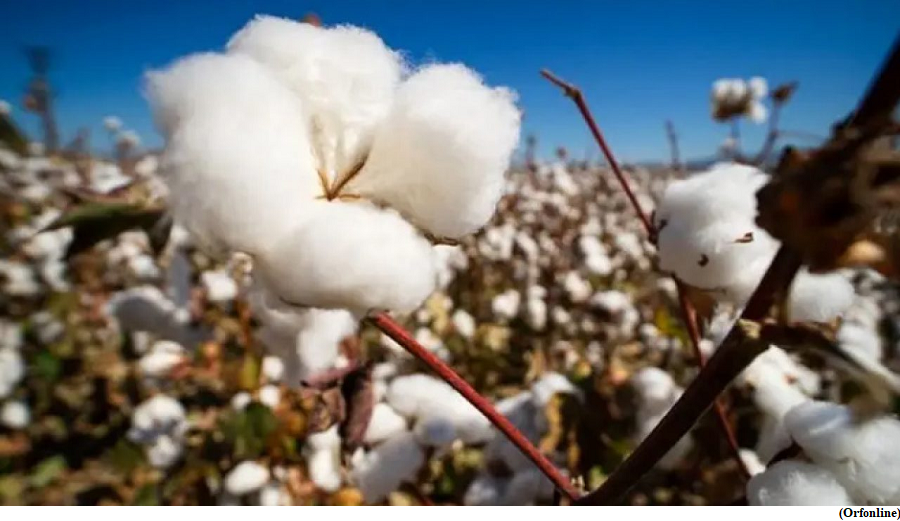Biodiversity and cotton, stitching together a sustainable future (GS Paper 3, Environment)

Context:
- Up until now, sustainability efforts within the textile and apparel (T&A) industry have primarily centred around climate mitigation and addressing pollution, stemming from the production of raw materials, as well as material preparation and processing.
- However, there has been comparatively less exploration or insufficient reporting regarding the industry’s impact on biodiversity. This is because biodiversity as a subject encompasses a multifaceted and intricate realm that spans forests, oceans, freshwater bodies.
- Assessing the influence of raw material production on these ecosystems is far from straightforward; it demands a diverse set of indicators and complex methodologies.
Cotton as raw material:
- Cotton, often referred to as ‘white gold’ is one of the most crucial raw materials for the multi-billion-dollar textile and apparel (T&A) industries.
- An astounding 26 million tons of cotton are utilised annually, specifically by the T&A industry.
- Consequently, cotton quite naturally emerges as the major driving force behind the integration of sustainability principles into the fashion industry.
Biodiversity loss:
- Biodiversity loss has emerged as a major contemporary risk, supported by substantial evidence linking it to agricultural and other economic and business activities.
- According to a 2019 report from the UN-backed Intergovernmental Science-Policy Platform on Biodiversity and Ecosystem Services (IPBES), the rate of biodiversity decline is now nearly 1,000 times faster than in prehuman history. This report also highlights the alarming fact that one million of the Earth’s 8 million known species are currently at risk of extinction.
- The Living Planet Index report by WWF in 2022 paints a similarly concerning picture, revealing a 69-percent decline in the populations of mammals, birds, amphibians, reptiles, and fish worldwide over the past half-century.
- These reports collectively underscore the profound economic consequences of biodiversity loss, as it severely impacts nature-based services like pollination, water recharge, filtration, flood control and nutrient recycling.
- It becomes clearly evident then that prioritising the safeguarding of biodiversity is not just an environmental concern but a critical step towards reshaping our global economy in a more sustainable direction.
Overuse of pesticide & soil degradation
- The textile and apparel (T&A) industry is heavily dependent on land-based raw materials, in particular cotton.
- The fact that cotton production systems are directly connected to issues like soil degradation and changes in natural systems, imparting toxicity loads on terrestrial and freshwater ecosystems, the T&A industry stands out as a substantial contributor to biodiversity loss.
- Cotton farming has garnered notoriety as one of the most voracious consumers of pesticides in modern agriculture.
- The crop is responsible for a substantial 4.71 percent of total pesticide sales globally, with a particularly alarming share of 10.24 percent devoted to insecticides.
- In countries like India, cotton cultivation alone is responsible for a staggering 50 percent of pesticide usage. Compounding this problem and making the impact globally significant, is often the geographical proximity of cotton-growing regions to Key Biodiversity Areas (KBA).
- This coexistence poses an immediate and grave threat to the biodiversity of terrestrial and freshwater ecosystems in the KBA, highlighting the urgent need for sustainable practices and conscientious stewardship in the T&A industry.
Global commitment:
- The T&A sector holds a vital responsibility, therefore, in actively engaging in the protection, preservation, restoration, and rejuvenation of biodiversity.
- The United Nations Convention on Biological Diversity, with its Aichi Biodiversity Targets (consisting of 20 specific targets to address and mitigate biodiversity loss across the globe), aligns closely with the UN Sustainable Development Goals (SDGs), fostering a comprehensive approach to biodiversity conservation.
- Additionally, the International Code of Conduct on the Distribution and Use of Pesticides, adopted by the UN’s Food and Agriculture Organization (FAO) council, underscores the importance of responsible pesticide use, in safeguarding ecosystems.
- The introduction of frameworks like the Task Force on Nature-related Financial Disclosures (TNFD) also reflects a growing awareness among businesses of the financial implications of biodiversity protection.
- TNFD provide a framework for businesses to report on risks from biodiversity loss and ecosystem degradation. These significant developments, combined with the emergence of Science-Based Targets for Nature, offer a glimmer of hope.
- The development will also enable the textile and apparel (T&A) industry to establish comprehensive biodiversity goals for themselves.
Sustainable choices:
- The textile and apparel (T&A) industry needs a rebooting of its priorities urgently. It must revamp its sustainability policies, placing biodiversity protection and restoration at the forefront.
- This isn’t a new beginning; substantial investments have already been channelled into the expansion of sustainability standards within the cotton sector. These standards inherently encompass elements aimed at addressing biodiversity concerns at the farm level.
- To further fortify these efforts, there’s a need to champion nature-based initiatives. This includes the promotion of agroecological practices, regenerative agriculture, and natural farming, all of which contribute significantly to enhancing land quality, which in turn, yield valuable biodiversity benefits by improving soil health, vegetation and reducing the reliance on harmful agrochemicals.
Way Forward:
- The approach could be further scaled up through collaborative and sustainable landscape-level initiatives that engage multiple stakeholders. These initiatives represent a significant step forward in addressing biodiversity loss and facilitating the ecological restoration of landscapes.
- The landscape level collaboration of businesses, policymakers and producers, can forge a path towards a more sustainable future that prioritises both economic growth and environmental well-being.
- T&A industry professionals often say that fashion is primarily inspired by nature and natural surroundings. It is time then that fashion gives back to its creator. It must for its own sustainable existence, weave a future where fashion thrives in harmony with biodiversity.


